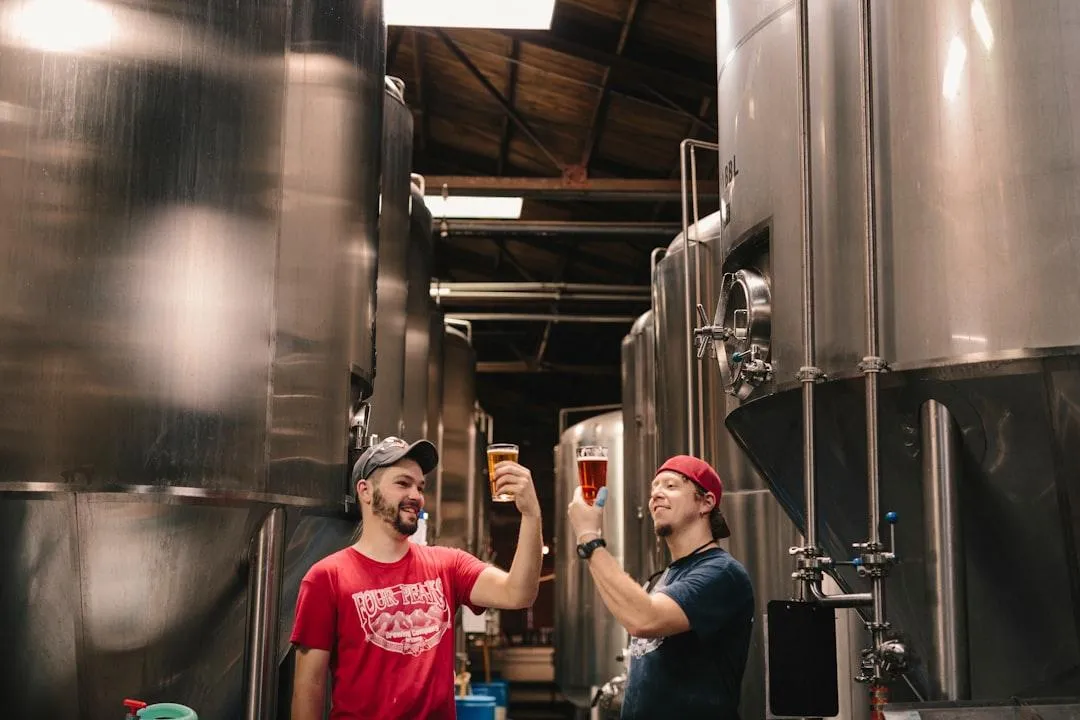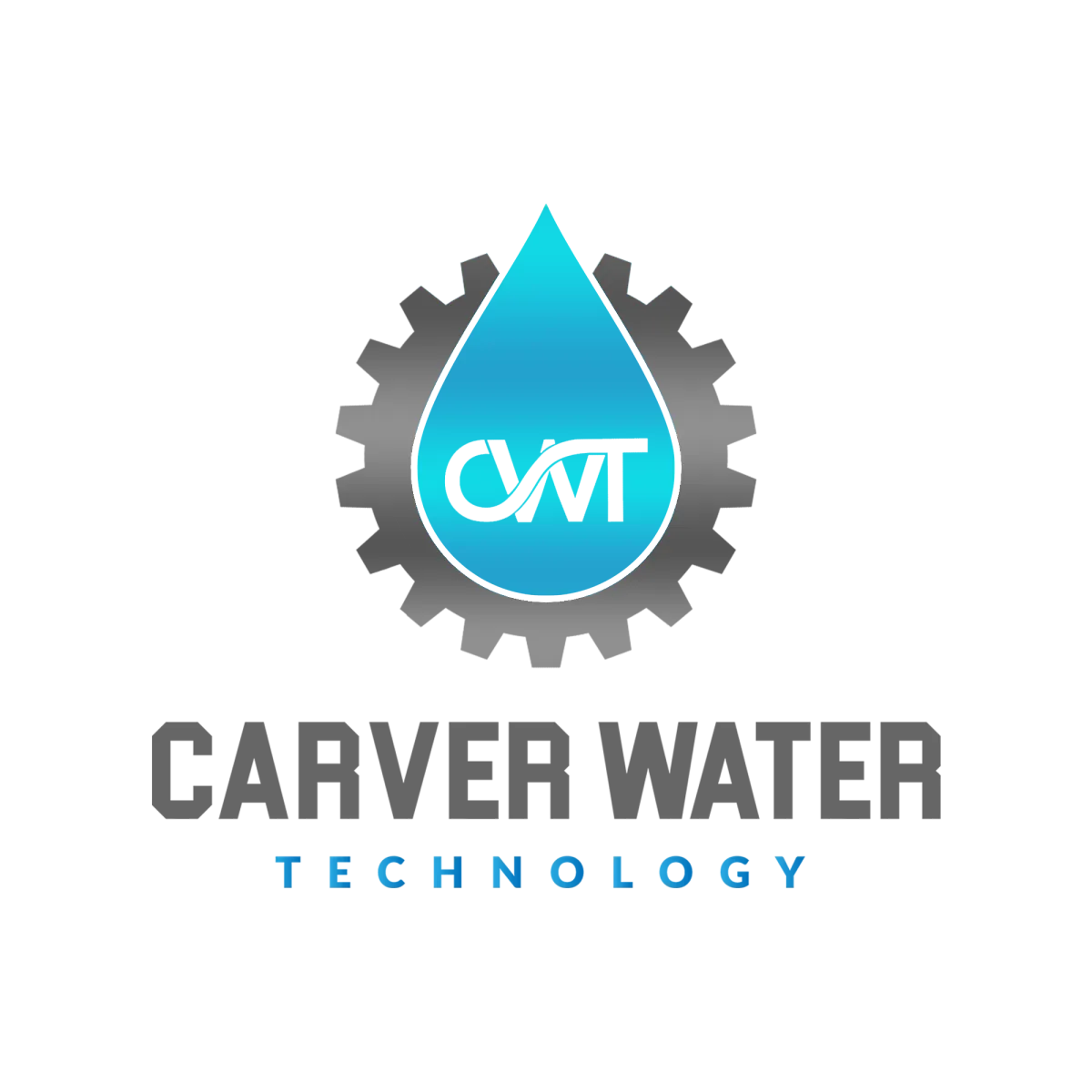
Brewery Water Quality Crisis: Technical Challenges Killing Your Beer Consistency
Introduction: When Water Quality Destroys Your Best Recipe
You've perfected your flagship IPA recipe over months of careful adjustments. The hop balance is perfect, the malt profile delivers exactly the right sweetness, and your customers can't get enough. Then suddenly, batch 127 tastes completely different. Same recipe, same process, but something's wrong.
The culprit? Your water quality changed without warning.
Water comprises over 90% of your finished beer, making it the single most critical ingredient in your brewing process. Yet most breweries treat water as an afterthought until quality problems force expensive emergency fixes. By then, you've already shipped inconsistent product, confused loyal customers, and potentially damaged your brand reputation.
Technical water quality problems don't announce themselves with alarms or warning lights. They reveal themselves through subtle flavor changes, processing difficulties, and equipment performance issues that can take weeks to identify and months to correct.
Carver Water Technology specializes in solving complex brewing water challenges that destroy consistency and profitability. Our technical team identifies the root causes of water quality problems and engineers permanent solutions that protect your recipes and your reputation.
Tasting unexpected off-flavors in your latest batch? Book a same-day water quality analysis to identify contamination before it ruins more production.
The Hidden Technical Challenges Destroying Beer Quality
Mineral Profile Instability
Municipal water systems constantly adjust treatment chemicals based on seasonal demand, source water changes, and regulatory requirements. These adjustments directly impact the mineral profile of your brewing water, creating batch-to-batch variations that destroy recipe consistency.
Calcium fluctuations affect enzyme activity during mashing, alter hop utilization rates, and change yeast performance characteristics. A 50 ppm calcium increase can reduce mash efficiency by 8-12% while simultaneously increasing bitterness perception by 15-20%.
Sulfate-to-chloride ratios determine the fundamental character of your beer - whether it tastes crisp and hoppy or smooth and malty. Municipal treatment changes can shift this ratio dramatically within days, transforming your carefully balanced pale ale into an entirely different beer.
Alkalinity variations destroy mash pH control, the foundation of proper enzyme function. When source water alkalinity increases unexpectedly, your standard acid additions become insufficient, leading to poor conversion efficiency, astringent flavors, and color development problems.
Chloramine Breakthrough Problems
Standard carbon filtration fails against chloramine during high-usage periods or when filter media approaches replacement time. Unlike chlorine, chloramine persists longer and requires specialized treatment approaches that many breweries don't implement properly.
Chloramine breakthrough creates medicinal off-flavors that customers immediately detect. Even trace amounts (0.1 ppm) produce noticeable chlorophenolic compounds that destroy beer character and brand reputation.
Temperature-dependent removal efficiency means chloramine treatment effectiveness varies with seasonal temperature changes. Summer operations often experience breakthrough events that winter operations never encounter.
pH Control System Failures
Automated pH adjustment systems commonly fail due to probe fouling, calibration drift, and chemical feed pump problems. These failures often go undetected for days, affecting multiple batches before operators notice quality changes.
Mash pH outside the 5.2-5.6 optimal range reduces extraction efficiency, increases astringency, and promotes unwanted color development. A 0.3 pH unit increase can reduce extraction by 15% while creating harsh, unpalatable flavors.
Cleaning chemical pH shock occurs when CIP systems accidentally discharge high or low pH solutions into brewing water systems, contaminating entire water storage tanks and affecting multiple subsequent batches.
Scaling visible in your heat exchanger? Talk to our engineers immediately before it kills your efficiency and threatens equipment integrity.
Membrane System Technical Failures
Reverse Osmosis Performance Degradation
RO membrane fouling reduces rejection rates gradually, allowing increasing amounts of dissolved solids through the system. This gradual degradation often goes unnoticed until beer quality problems become severe enough to trigger investigation.
Biological fouling in RO systems creates inconsistent water quality as biofilms grow and slough off membranes unpredictably. These events can introduce organic compounds that affect fermentation performance and flavor development.
Membrane damage from chlorine exposure occurs when carbon pretreatment fails, allowing oxidizing chemicals to reach membrane surfaces. Damaged membranes allow sulfates, nitrates, and other dissolved ions through at unpredictable rates.
Pressure and Flow Instabilities
Insufficient RO system capacity during peak demand periods forces compromises between water quality and production schedule. Operating RO systems beyond design capacity reduces rejection efficiency and shortens membrane life.
Pressure fluctuations from inadequate feed pumps or downstream restrictions create inconsistent permeate quality. Variable pressure operation can change salt rejection by 20-30%, affecting final water mineral content unpredictably.
Recovery rate variations occur when systems automatically adjust to maintain flow rates during membrane fouling progression. Higher recovery rates concentrate rejected salts, potentially causing scale formation and membrane damage.
Carbon Filtration System Problems
Media Exhaustion and Channeling
Carbon media exhaustion occurs gradually and unpredictably, depending on chlorine loading, contact time, and flow rate variations. Standard replacement schedules often fail to account for municipal treatment changes that accelerate media consumption.
Flow channeling through carbon beds reduces contact time and creates breakthrough pathways for chlorine and chloramine. Poor backwashing procedures or inadequate bed expansion exacerbate channeling problems.
Temperature effects on adsorption reduce carbon effectiveness during summer operations when water temperatures increase. Higher temperatures reduce chlorine adsorption capacity by 15-25%, creating seasonal breakthrough risks.
Bacterial Growth in Carbon Systems
Bacterial colonization of carbon media creates biological fouling that reduces adsorption capacity and introduces organic compounds that affect beer flavor. These biofilms can harbor off-flavor producing organisms that contaminate finished beer.
Biofilm detachment events suddenly release accumulated bacteria and organic compounds into treated water, potentially contaminating entire brewing batches. These events often coincide with backwashing operations or flow rate changes.
Carbon bed showing chlorine breakthrough? Schedule emergency carbon replacement to prevent contamination of your next batch.
Ion Exchange System Technical Issues
Resin Degradation and Fouling
CASE STUDY: Lagunitas' Water Efficiency Achievement Lagunitas Brewing Company in California implemented Toray's membrane bioreactor (MBR) and reverse osmosis system to achieve 70% water recycling in their brewing process. They reduced their water-to-beer ratio from 4:1 down to 2.5:1, demonstrating significant operational cost savings while maintaining quality consistency.
Ion exchange resin degradation from chlorine exposure, organic fouling, and mechanical breakdown creates inconsistent water treatment performance. Degraded resins leak previously captured ions unpredictably, affecting water mineral profiles.
Iron and manganese fouling of cation exchange resins occurs gradually and reduces capacity for calcium and magnesium removal. This fouling often goes undetected until hardness breakthrough creates scaling problems in heat exchangers.
Organic fouling from humic acids and other natural organic matter reduces resin efficiency and creates preferential flow paths that bypass active exchange sites. This fouling is particularly problematic for surface water sources.
Regeneration System Problems
Inadequate regeneration due to brine concentration problems, flow rate issues, or contact time reductions creates incomplete resin restoration. Poorly regenerated resins provide inconsistent treatment performance and premature breakthrough.
Cross-contamination during regeneration occurs when rinse cycles fail to completely remove regenerant chemicals. Residual sodium or chloride can appear in treated water, affecting beer flavor and fermentation performance.
Regeneration timing failures from controller malfunctions or incorrect programming can cause resin exhaustion during peak production periods, forcing compromises between water quality and production schedules.
Heat Exchanger and Cooling System Impacts
Scale Formation Problems
Mineral scale buildup in heat exchangers reduces heat transfer efficiency by 30-40% while creating localized hot spots that promote protein denaturation and off-flavor formation. Scale formation accelerates when water treatment systems fail to maintain proper mineral levels.
Scale composition variations from inconsistent water treatment create different removal challenges. Calcium carbonate scale responds to acid cleaning, but calcium sulfate scale requires mechanical removal or specialty chemicals.
Biofilm formation under scale deposits creates protected environments for bacteria and wild yeast that can contaminate finished beer. These biofilms resist standard CIP procedures and require specialized cleaning protocols.
Corrosion and Pitting
Aggressive water conditions from over-treatment or pH control failures accelerate corrosion in stainless steel systems. Chloride-induced pitting creates contamination risks and equipment failure points that threaten production continuity.
Galvanic corrosion at dissimilar metal joints increases when water treatment removes protective mineral films. This corrosion creates metallic off-flavors and potential contamination sources.
Heat exchanger performance dropping? Get immediate efficiency diagnosis to restore performance and prevent contamination risks.
Steam Boiler Water Quality Challenges
Feedwater Treatment Failures
Oxygen scavenger depletion leads to pitting corrosion in boiler tubes and feedwater systems. This corrosion releases iron oxides that contaminate steam condensate and affect beer quality through metallic off-flavors.
pH control problems in boiler feedwater accelerate corrosion and scale formation simultaneously. Low pH creates acid attack on metal surfaces while high pH promotes caustic corrosion and caustic carryover.
Hardness breakthrough from ion exchange system failures creates scale formation in boiler tubes, reducing heat transfer efficiency and creating hot spots that promote localized corrosion.
Steam Quality Issues
Carryover contamination occurs when boiler water treatment chemicals enter steam systems through mechanical carryover or chemical volatilization. These contaminants directly contact wort and finished beer during steam injection operations.
Condensate contamination from cooling water leaks in heat exchangers introduces bacteria, chemicals, and dissolved solids into steam systems. This contamination cycles through multiple batches before detection.
Steam trap failures allow condensate backup and create water hammer conditions that damage equipment and create contamination pathways between steam and process systems.
Laboratory Testing and Quality Control Gaps
Inadequate Testing Frequency
Weekly or monthly water testing fails to detect rapid changes in municipal water quality that affect multiple batches between test cycles. Critical parameters can shift dramatically within days of testing.
Limited parameter testing misses important quality indicators that affect beer character. Standard tests often omit alkalinity, specific ions, or organic contaminants that significantly impact brewing performance.
Poor sampling techniques create false confidence in water quality data. Sampling from incorrect locations, improper preservation, or extended hold times generate misleading results that mask real problems.
Testing Equipment Problems
pH meter calibration drift creates systematic errors in critical pH measurements. Uncalibrated meters can show 0.2-0.5 pH unit errors that translate to significant brewing performance problems.
Conductivity meter fouling from mineral deposits or biological growth affects accuracy of dissolved solids measurements. These errors mask water treatment system performance degradation.
Chlorine test kit degradation from age, heat exposure, or contamination creates false readings that hide chlorine breakthrough events. Expired reagents often show zero chlorine when significant levels exist.
Testing equipment giving inconsistent readings? Implement professional monitoring protocols with proper calibration to catch problems before they affect beer quality.
CWT's Technical Problem-Solving Approach
Comprehensive Water System Analysis
Complete system evaluation identifies vulnerability points throughout your water treatment chain, from source water intake through final brewing water delivery. Our analysis reveals hidden problems that standard testing misses.
Real-time monitoring implementation provides continuous oversight of critical parameters with immediate alerting when conditions approach problem thresholds. This monitoring prevents quality problems rather than detecting them after they occur.
Process optimization through systematic evaluation of treatment system performance, identifying opportunities to improve consistency, reduce operating costs, and enhance reliability.
Advanced Treatment Technologies
Multi-barrier treatment approaches provide redundant protection against water quality variations. When primary treatment systems experience problems, backup systems maintain consistent water quality.
Specialized filtration media designed for brewery applications remove specific contaminants that standard carbon cannot address. These media provide enhanced protection against taste and odor compounds.
Automated chemical feed systems maintain precise water chemistry control regardless of source water variations. Advanced controllers adjust treatment in real-time based on continuous monitoring data.
Emergency Response Capabilities
Mobile water treatment units deployable within 24 hours provide immediate relief when primary treatment systems fail. These units maintain production schedules while permanent repairs proceed.
Technical troubleshooting support through experienced water treatment specialists who understand brewing requirements and can diagnose complex system interactions.
Rapid parts and media supply ensures minimal downtime when treatment system components require replacement or regeneration.
Preventing Future Water Quality Crises
Proactive Monitoring Systems
Automated parameter tracking with data logging and trending analysis identifies gradual changes before they affect beer quality. These systems provide early warning of developing problems.
Predictive maintenance scheduling based on actual system performance rather than arbitrary time intervals. This approach prevents failures while optimizing maintenance costs.
Quality correlation analysis links water quality data with beer quality measurements, identifying critical control points and acceptable operating ranges.
System Redundancy Planning
Backup treatment capacity ensures continued operation when primary systems require maintenance or experience failures. Redundant systems eliminate forced production shutdowns.
Cross-contamination prevention through proper system isolation and emergency bypass procedures that maintain water quality during system maintenance.
Emergency chemical supply provides immediate response capability when standard treatment chemicals become unavailable or ineffective.
Staff Training and Procedures
Water quality awareness training for brewing staff ensures early recognition of water-related problems and proper response procedures.
Troubleshooting protocols provide step-by-step guidance for common water quality problems, enabling rapid resolution without external support.
Documentation systems capture water quality data, system performance metrics, and correlation with beer quality for continuous improvement.
Quality consistency problems getting worse? Schedule comprehensive system optimization to eliminate variations and protect your beer quality permanently.
Conclusion: Protecting Your Beer's Foundation
Water quality problems destroy beer consistency, damage equipment, and threaten brewery profitability. Technical challenges from mineral variations to membrane failures create complex problems that require specialized expertise to solve permanently.
Don't wait for the next quality crisis to force expensive emergency solutions. Proactive water treatment optimization protects your recipes, maintains consistency, and prevents costly production problems.
Carver Water Technology provides the technical expertise breweries need to solve complex water quality challenges. Our team identifies root causes, engineers permanent solutions, and provides ongoing support to maintain optimal brewing water quality.
Key technical services:
Comprehensive water system analysis and optimization
Real-time monitoring and alerting systems
Advanced treatment technology implementation
Emergency response and mobile treatment units
Predictive maintenance and reliability programs
Take control of your brewing water quality today: Schedule your technical water system evaluation to identify problems and implement solutions before they affect another batch.
About Carver Water Technology: We engineer, supply, and install advanced water treatment systems for breweries worldwide. Our technical team specializes in solving complex brewing water challenges that affect quality, consistency, and profitability.
Emergency Technical Support: For immediate water quality emergencies, contact our technical response team for rapid problem diagnosis and solution implementation.









